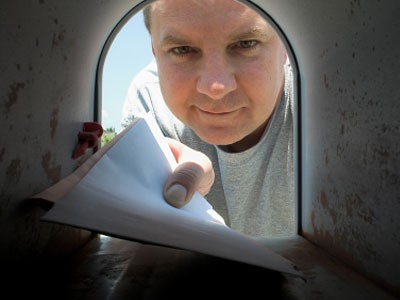Make Your Money Last in RetirementKiplinger
Post on: 27 Июнь, 2015 No Comment

To make sure your retirement nest egg goes the distance, you need growth as well as income. Rule number one: Don’t dump stocks.
In 2007, after teaching math for 34 years at a private school in the Washington, D.C. area, Bob Long was ready to hang up his teaching career and head into a new stage of life. He spent a few months training his successor as head of the math department and, in December, retired at the relatively young age of 61. Bob’s wife, Margaret (then 56), had retired a few months earlier from her job in the mortgage industry. The couple were eager to kick back in their new home, in Ocean Pines, Md.
See Also: A Retirement Spending Blueprint Will Protect Your Nest Egg
Their timing couldn’t have been worse. The stock market entered a downward spiral just as the Longs were tapping into their retirement savings. They expected their money to last well into their nineties, based on retirement calculators, so they were rattled to see their balance shrink so quickly. I’m a mathematician, says Bob. I learned early on that average returns are nice for the long term, but you do not want to see a drop in the market immediately after retiring. At one point, he estimates, their portfolio was down 25% from its preretirement balance.
If their timing was all wrong, their response was just about perfect. Rather than bail out of stocks in a down market, they stayed the course (and stopped looking at their brokerage statements). They were conservative in the amounts they took from their retirement accounts. And they dipped back into the workforce. Bob returned to the classroom as a substitute teacher, and both he and Margaret took short-term jobs at the Census Bureau—for fun and pocket money.
The Longs’ restrained approach was rewarded when the market and their nest egg began to rebound after March 2009. But they (and other retirees) can’t be guaranteed they won’t face future challenges. A lot can change over 30 years, says David Blanchett, head of retirement research at Morningstar Investment Management, an investment consulting branch of Morningstar. The key is to think about where you are now and where you want to be in the future—and adjust accordingly.
Don’t dump stocks
At 65, you’d think you could stop worrying about building your retirement stash and focus on preserving it. But with today’s longer life expectancies (a 65-year-old man can expect to live until 84, on average, and a 65-year-old woman can expect to live until age 86), you have to take on some level of risk if you want to keep up with and beat inflation, says Nate Wenner, a certified financial planner in Edina, Minn.
To keep the growth engine running, financial planners generally recommend that you have 40% to 60% in stocks at the start of your retirement, with the rest in cash and fixed-income investments to tamp down risk. A more conservative investor might start with 30% in stocks and 70% in fixed-income investments; aggressive investors would reverse it to 70% and 30%.
How you invest within those parameters gets tricky, says Blanchett, given that bond yields remain low by historical standards (recently 2.6% for the ten-year Treasury bond, for example) and stock prices may be topping out. Aim for a diversified portfolio that includes U.S. and international stock funds, an emerging-markets stock fund and a dash of real estate and commodities. On the bond side, given the low-interest-rate environment, go with short-term bonds, floating-rate bank loan funds and high-yield bond funds (see our suggested portfolio below).
As you get further into retirement, gradually reduce risk by shifting to more bonds and cash. Some investors feel comfortable allocating 30% to stocks even in their advanced old age; others end up with 10% to 15% in stocks and the rest in cash and fixed investments. Only the most conservative investors get out of stocks altogether, says Maria Bruno, a senior investment analyst at Vanguard, and those investors are very rare.

Making the adjustments yourself can be a bother; instead, consider putting your money in a target-date fund (if you haven’t already), which adjusts the mix for you. Be aware that funds have different asset mixes and different timetables for adjusting them, called glide paths (see Pick the Best Target-Date Fund for You ). For instance, the Vanguard 2015 fund, aimed at people retiring between 2013 and 2017, invests 50% in stocks and 50% in bonds that year and moves to 30% stocks and 70% bonds over seven years. A comparable fund from Fidelity has you start retirement in 2015 with 50% in stocks, 40% in bonds and 10% in short-term funds and moves to 20% stocks with the rest in bonds and short-term funds over ten to 15 years.
Another strategy is to carve out part of the money you would otherwise put in bonds to buy an immediate fixed annuity, which delivers a guaranteed income for as long as you live. If you buy an annuity with 30% to 40% of your savings, that’s the bond part of your portfolio. Then you can go all in with stocks for the rest, says Steve Vernon, author of Money for Life (Rest-of-Life Communications). Low interest rates are dampening the income you can generate with a single-premium immediate annuity—the meat and potatoes of the annuities world—but there are ways to boost the payouts, such as laddering or buying a deferred-income annuity (see Add an Annuity to Your Retirement-Income Mix ).
Smart distribution of your assets is only part of the challenge. You also need to adopt a strategy to make your income last for the rest of your life. Many retirees aim to replace 80% of their preretirement income, but it’s a good idea to create a budget and test-drive it before you quit your day job (see Countdown to Retirement: Test-Drive Your Budget ). If you can’t get by with Social Security, a pension and savings, consider tapping your home equity through a reverse mortgage (see Fill the Gaps in Your Retirement Income ).
Live off your interest
One obvious way to ensure you won’t run your portfolio dry is to siphon off the interest, dividends and perhaps the capital gains on your investments and preserve the principal. At current interest rates, you’d need a hefty amount plus a decent guaranteed income to generate a respectable paycheck. A million dollars in a balanced fund or a balanced portfolio with a 3% annual payout ($30,000) plus a Social Security benefit of $2,000 a month (for one person) gives you $54,000 annually. If you’re married and you and your spouse each get $2,000 a month in Social Security, you’d have an annual income of $78,000.
If you’re accustomed to a more lavish lifestyle, that may not be enough, especially considering taxes (for tax-efficient ways to tap your accounts, see How to Lessen the Tax Bite in Retirement ). You could supplement the amount by working part-time for the first few years of retirement, postponing the point at which you draw down your principal—at least until you have to take required minimum distributions. The longer you wait to tap your nest egg, the shorter your time horizon becomes and the less likely your money will run out. Better yet, work a little longer and delay taking Social Security until you hit 70. Your benefit will earn 8% a year in delayed retirement credits from age 66 to age 70. (To learn more, read Strategies to Boost Your Social Security ).














